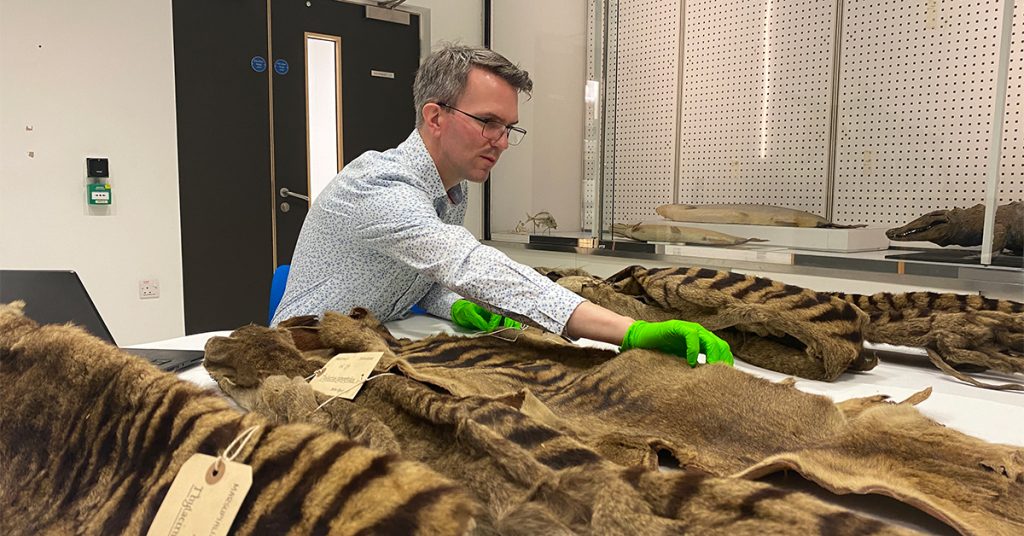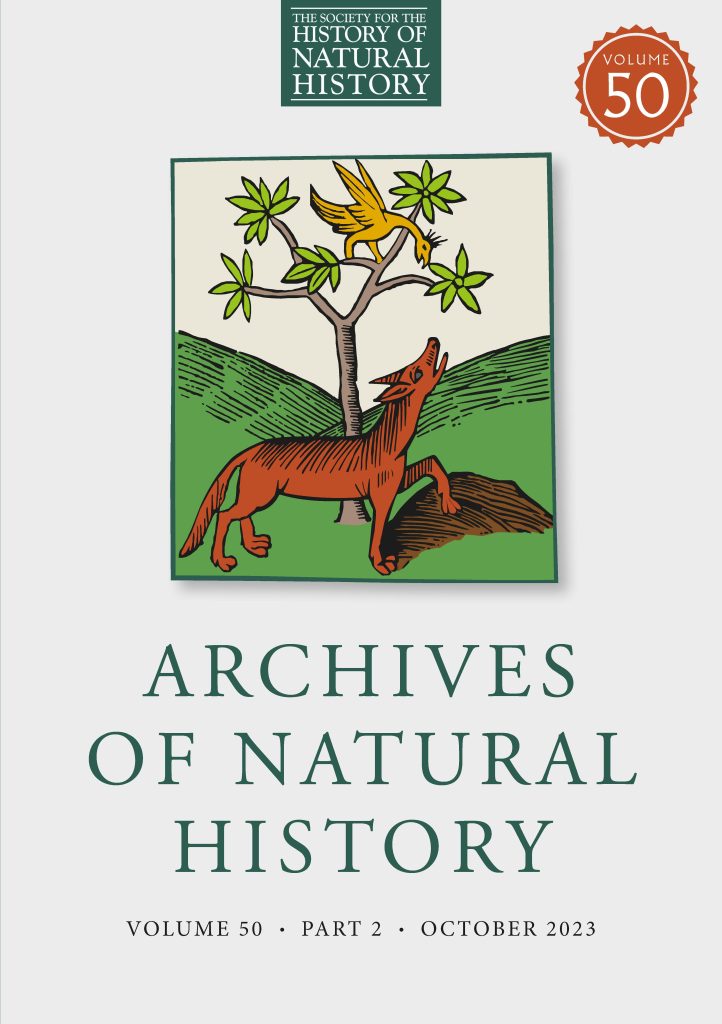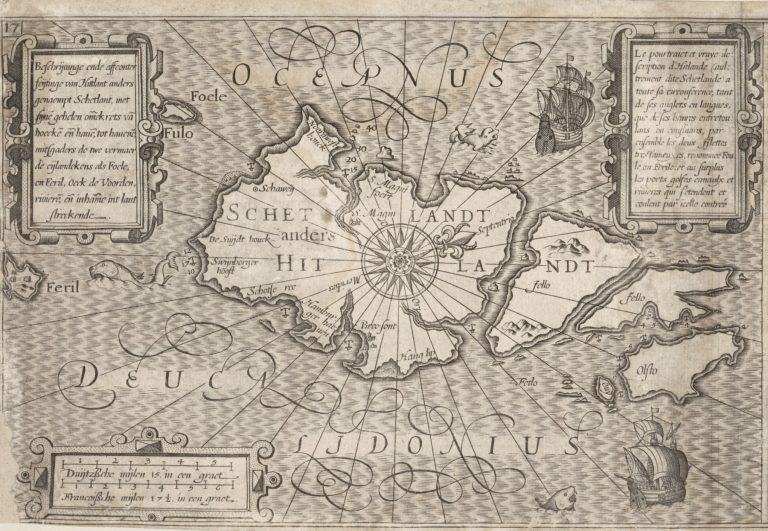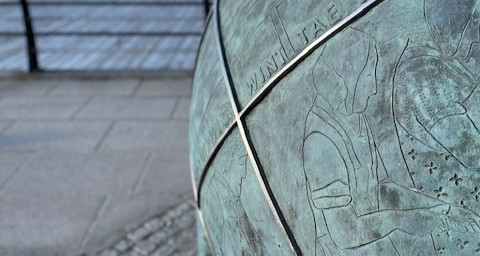
by Jack Ashby, University of Cambridge
Readers are advised this article contains the names of Aboriginal people who have died, and mentions attempted genocide, violence towards and offensive language about Aboriginal peoples.
We might imagine that scientists gain recognition thanks to the ideas they generate and the knowledge they contribute to our understanding of the world, earned through careers of diligent research. But not everyone takes this route.
When Tasmanian solicitor Morton Allport died in 1878, his obituary described him as the “the foremost scientist in the colony”. My research, published today, shows that Allport achieved his status by obtaining the bodily remains of Tasmanian Aboriginal people and endangered animals, and sending them to European collectors – specifically asking for scientific accolades in return.
I read hundreds of letters between Allport and his European correspondents. It’s clear from these letters that Allport played up the rarity and value of these remains, while both the people and the animals were being subjected to extraordinary colonial violence. Allport worked in Tasmania at a time when its natural history captivated European scientists. Enigmatic animals like the platypus challenged Europe’s understanding of the natural world.
The now extinct thylacine, or Tasmanian tiger was related to other marsupials such kangaroos and wombats. It was the largest marsupial carnivore of modern times. And it offered one of the most perfect examples of convergent evolution – where astonishingly similar animals evolve independently on different branches of the tree of life. Thylacines and wolves are separated by 160 million years of evolution, but closely resemble each other (albeit thylacines had stripes).
A racist hierarchy
But accounts of these animals also fed into the racist view that Australia was a primitive evolutionary backwater. Despite the intrigue, almost every 19th-century account of Australian mammals paints them as weird, inferior beasts.
Britain colonised Tasmania in 1803. Thylacines were considered a threat to the new sheep farming industry. So was the Indigenous human population. From 1830 the colonists offered bounties to encourage their violent removal.
The result was extinction of the thylacine and genocide of Indigenous peoples. I use the term genocide here because, although they were unsuccessful, the British aimed to completely destroy Tasmania’s Indigenous population.
As populations of thylacines and Tasmanian Aboriginal people were decimated, demand for their remains in museums increased. Allport sent more thylacine specimens to Europe than anyone else, and proudly claimed to be the supplier of every Tasmanian human skeleton to reach European collections.
He was also involved in the mutilation of the body of an Aboriginal man, William Lanne. Lanne was considered a “prize specimen” as the colonists believed him to be the last Tasmanian man when he died in 1869. They were wrong – thousands of Tasmanian Aboriginal people are alive today.
The events surrounding Lanne’s death have been at the centre of much debate in Tasmania in recent years. This August local authorities agreed that a statue of politician William Crowther – also implicated in the mutilation of Lanne’s body – would be removed from Hobart city centre, the Tasmanian state capital.
Historical figures like Allport allow us to consider how violence against the Indigenous population and the exploitative nature of colonial natural history were parts of the same historical processes. That is not to say these issues were as harmful as each other. Rather, they were connected events taking place at the same time. When we consider the parallels between them, it helps build a picture of the human and environmental costs of colonialism.
An uncomfortable legacy
Aside from both being viewed as pests in their own environment, thylacines and Aboriginal people were incorrectly described in colonial and European accounts as savage, primitive, unadaptable and unintelligent.
In the context of European racism, hierarchies were invented by the western scientific elite that placed marsupials as inherently “inferior” compared to European mammals – just as human racial hierarchies had been similarly fabricated.
It led to a narrative that they would inevitably become extinct through exposure to more modern newcomers. This propaganda minimised the impact of the state-sponsored violence.

Colonists described the people and thylacines as at fault for what happened to them – that they couldn’t cope in the “modern” world. This obscures the actual reason for their decline: they were being killed either directly by European settlers or by the conditions the colonial establishment forced them to live in.
But there is also an interesting paradox regarding these two “extinctions” and the mythology surrounding them. Thylacines are extinct, but the notion that they are not is mainstream, whereas Aboriginal Tasmanians are not extinct despite a persistent narrative that they were exterminated.
I now work with some of the thylacine skins Allport sent to Europe, at the University Museum of Zoology, Cambridge. They are invaluable scientific specimens that teach us so much about an iconic extinct species.
But these skins also hold power in allowing museums to connect people to this story. I can no longer look at them without thinking of the human story they relate to. Museum specimens aren’t just scientific data – they also reflect important moments in history, much of which was tragically violent.
This article is republished from The Conversation under a Creative Commons license. Read the original article.
Jack Ashby’s full research article can be read in the latest issue of Archives of Natural History Volume 50, Issue 2.
About the author
Jack Ashby, Assistant Director of the University Museum of Zoology, Cambridge, University of Cambridge

About the journal
Archives of Natural History is the journal of the Society for the History of Natural History, providing an avenue for the publication of research on the history and bibliography of natural history in its broadest sense.
Sign up for TOC alerts, recommend to your library, learn how to submit an article and subscribe to ANH.
Don’t forget to sign up to our mailing list to keep up to date with all of our free content and latest releases!





